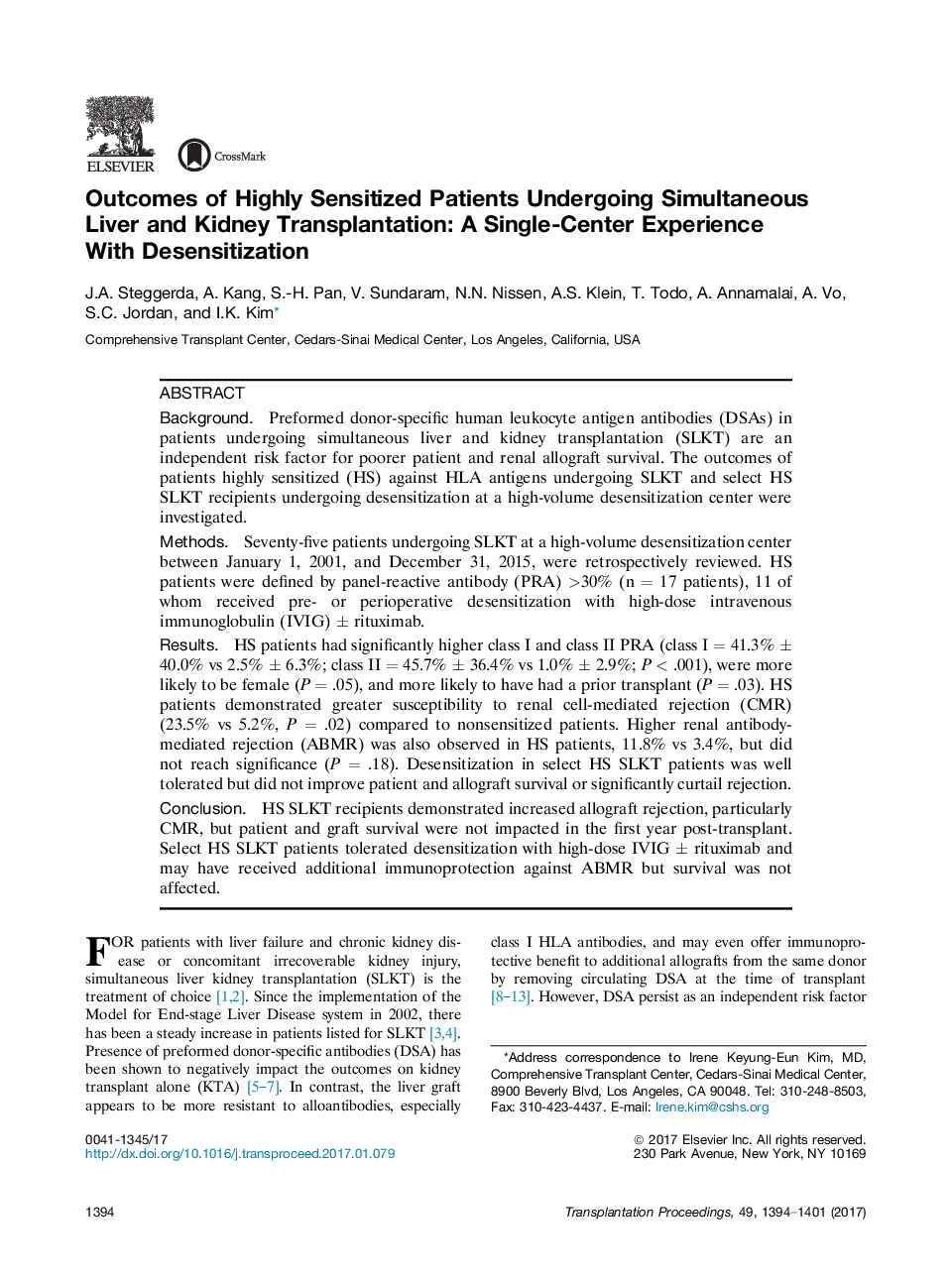| Article ID | Journal | Published Year | Pages | File Type |
|---|---|---|---|---|
| 5728700 | Transplantation Proceedings | 2017 | 8 Pages |
â¢We examine a desensitization strategy for highly sensitized patients, defined by PRA >30%, undergoing simultaneous liver and kidney transplantation.â¢One-year patient and allograft survival did not differ significantly between highly sensitized and nonsensitized patients.â¢Highly sensitized patients were more susceptible to both cell-mediated rejection and antibody-mediated rejection.
BackgroundPreformed donor-specific human leukocyte antigen antibodies (DSAs) in patients undergoing simultaneous liver and kidney transplantation (SLKT) are an independent risk factor for poorer patient and renal allograft survival. The outcomes of patients highly sensitized (HS) against HLA antigens undergoing SLKT and select HS SLKT recipients undergoing desensitization at a high-volume desensitization center were investigated.MethodsSeventy-five patients undergoing SLKT at a high-volume desensitization center between January 1, 2001, and December 31, 2015, were retrospectively reviewed. HS patients were defined by panel-reactive antibody (PRA) >30% (n = 17 patients), 11 of whom received pre- or perioperative desensitization with high-dose intravenous immunoglobulin (IVIG) ± rituximab.ResultsHS patients had significantly higher class I and class II PRA (class I = 41.3% ± 40.0% vs 2.5% ± 6.3%; class II = 45.7% ± 36.4% vs 1.0% ± 2.9%; P < .001), were more likely to be female (P = .05), and more likely to have had a prior transplant (P = .03). HS patients demonstrated greater susceptibility to renal cell-mediated rejection (CMR) (23.5% vs 5.2%, P = .02) compared to nonsensitized patients. Higher renal antibody-mediated rejection (ABMR) was also observed in HS patients, 11.8% vs 3.4%, but did not reach significance (P = .18). Desensitization in select HS SLKT patients was well tolerated but did not improve patient and allograft survival or significantly curtail rejection.ConclusionHS SLKT recipients demonstrated increased allograft rejection, particularly CMR, but patient and graft survival were not impacted in the first year post-transplant. Select HS SLKT patients tolerated desensitization with high-dose IVIG ± rituximab and may have received additional immunoprotection against ABMR but survival was not affected.
